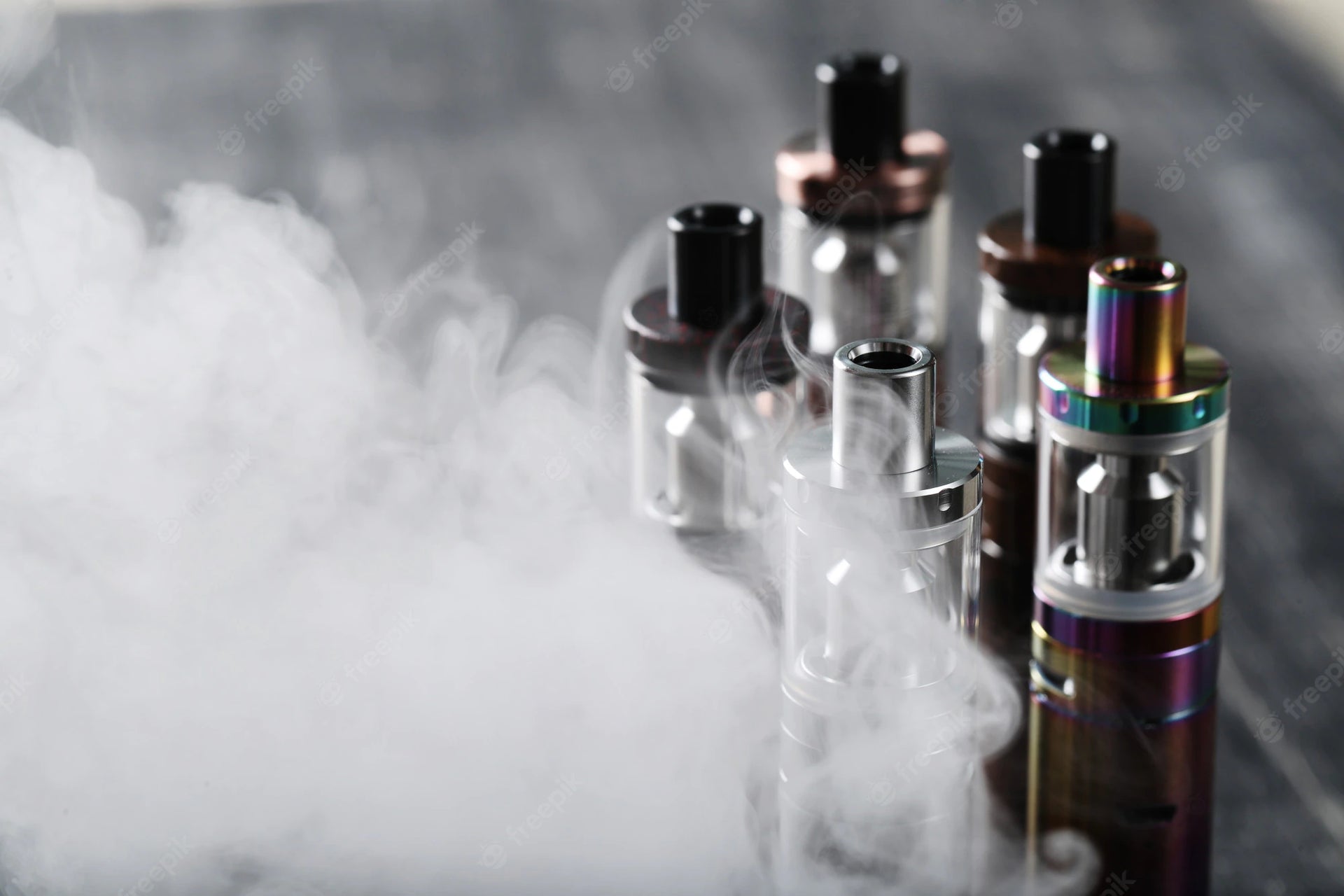
Scary Vaping Facts
Vaping may have come up in conversation, but what is it? The Center on Addiction defines vaping as taking in and letting out the vapour created by an e-cigarette. Electronic devices called e-cigarettes heat a liquid to generate an aerosol. They come in various sizes and forms. E-cigarettes that resemble cigarettes, cigars, and other traditional tobacco products are available. Others resemble pens or USB drives. Tanks are on larger e-cigarettes, which don't resemble conventional tobacco products. Most e-cigarettes feature a heating element, a battery, and a liquid reservoir.
E-cigarettes function by heating an e-juice to produce an aerosol or vapour. The fluid is frequently referred to as vape juice, liquid, or e-juice. Typically, this liquid includes nicotine as well as flavouring and other substances. The aerosol is breathed into the lungs by e-cigarette users. When an e-cigarette user exhales, onlookers may also live in the aerosol secondhand.
VAPE OR E-CIGARETTES

For e-cigarettes to work, a liquid solution must be heated to a temperature high enough to create an aerosol that can be inhaled. The answer frequently (though not always) contains nicotine, other substances, or narcotics like marijuana. The gadgets may look like cigars, pipes, USB memory sticks, pens, or even regular cigarettes (cig-a-likes). Currently, there are over 460 distinct e-cigarette brands available. Some have tasted like menthol, fruit, alcohol, chocolate, or other sweets. Nine of ten young adults who use electronic cigarettes choose flavoured vaping alternatives.
POSSIBLE EFFECTS
Although the long-term implications of e-cigarette usage are not yet established, research indicates that users, particularly teenagers, face serious health concerns. Lung growth and function "plateau between ages 20 to 25," according to Pulmonology specialist Kenny Larsen, a Physician Assistant at Carson Tahoe Health. Larsen said lung damage typically doesn't manifest until later in life because the lungs cease expanding beyond this point, meaning they are built to last us the whole of our lives. It's one of the reasons it's challenging to determine the actual harm caused by long-term vaping.
Since some aerosols don't include nicotine, tobacco companies promote "smoke-free" vaping as a "less dangerous" substitute for smoking. However, experts say that this claim is untrue. Even without nicotine, inhaling foreign particles—discovered in vaping products—is a risk with potentially fatal consequences, according to Downing.
E-cigarette usage has been linked to major lung disease, brain development in children, and serious lung damage. Additionally, experts said that anything other than air that is inhaled has the danger of causing long-term harm to the lungs from the perspective of an individual specializing in chronic lung illness.
TOP SCARY VAPING FACTS

It Has Nicotine
The addictive substance present in tobacco products, including e-cigarettes, is nicotine. According to research by the Centers for Disease Control and Prevention, Ninety-nine percent of e-cigarettes marketed in the US contain nicotine. It was discovered that nicotine was present in items with labels that expressly said they didn't contain nicotine and those that didn't mention it.
The adolescent brain, which continues to develop until age 25, is adversely affected by nicotine. The areas of the brain that regulate attention, learning, emotion, and impulse control may be impacted by nicotine use.
A brain cell connection called a synapse is formed when a new skill is learned. There are many synapses in a healthy, intelligent brain. Nicotine usage alters the development of synapses. Additionally, nicotine changes the way that synapses develop in the brain.
Unknown Long-Term Side Effects
The consequences of e-cigarettes over the long term are currently being studied. According to scientists, some of the components in vapour may be damaging to the lungs. E-cigarette flavourings are one illustration. Some juices for e-cigarettes might be okay to consume but not to inhale. It's so because the gut and lungs digest things differently.
Results of Cigarette Smoking
According to the findings, teenagers who use vapes are more likely to smoke conventional cigarettes. A 2018 National Academy of Medicine paper supports this. The study also discovered that using e-cigarettes increased future cigarette smoking frequency and intensity. Even if using an e-cigarette does not result in continued smoking, it is still dangerous.
Toxic
They are manufactured from liquid nicotine derived from tobacco leaves, but the liquid form is toxic, unlike tobacco leaves. It cannot be applied topically or swallowed. In actuality, less than one tablespoon of certain liquid tobacco from e-cigarette brands is sufficient to kill an adult. E-cigarette-related calls to poison control increased from 1 to 215 between 2010 and 2014. It raises concerns about the safety of vaping and e-cigarettes.
Not Safe Because It's Water Vapour
Another myth regarding e-cigarettes is that their harmful chemicals are eliminated since they emit water vapour rather than smoke. It's untrue since vaping goods still include chemicals that harm a person's health, even when vaporizing water. Because of the potency of specific chemical concentrations in water vapour, the risk can occasionally be higher than smoking. It's greatly influenced by how one sets the device's parameters, as higher settings logically result in stronger concentrations being released.
Marketed to Kids
E-cigarettes are promoted to children using the same strategies as regular tobacco products. In 2016, approximately 80% of high school pupils said they had seen advertisements for e-cigarettes. Television is one medium that advertising can exploit that traditional tobacco goods cannot.
Kids are drawn to e-cigarettes because many of them have flavors that taste like fruit and sweets. Many young people who use e-cigarettes say they first tried a flavoured version and did so for the flavors.
Additional factors led young people to try e-cigarettes besides flavors and persuasive advertising. Because of their interest, the notion that e-cigarettes are less dangerous than conventional tobacco products, and the lower price of traditional tobacco products, many young people reported using e-cigarettes.
Unregulated
There is no quality control because, despite the FDA's consideration of regulation, nothing has been implemented as of yet. Companies are not required to declare contents due to little to no regulation, and certain brands may contain hazardous substances like the antifreeze component diethylene glycol. Remember that low-tar and lite cigarettes were considered safer in the 1970s, even though they are now considered safer than combustible cigarettes.
Fatal Outcomes
E-cigarettes are so harmful that as of January 21, 2020, the CDC had officially confirmed that vaping was linked to 60 fatalities in the US. These deaths were brought on by lung damage brought on by vaping.
It's crucial to remember that the CDC and many other government agencies have just lately started tracking the impacts of e-cigarettes. As a result, more casualties were undoubtedly linked to other factors when vaping played a significant role.
Dangerous
E-cigarette batteries have brought on explosions and fires with defects. A number of these events have caused serious injuries. Additionally, harmful e-cigarette liquid is poisonous. The liquid has poisoned children and adults through ingestion, inhalation, or absorption through the skin or eyes. Children five years old or less make up roughly half of all calls to poison control centers in Australia regarding e-cigarettes.
May Perpetuate Drug Addiction
Vaping is a convenient way for drug addicts to get their fix because it leaves no traces or obvious indicators of drug usage, making it the ideal cover. Virtually any drug mixed with water can be absorbed through vaping devices to inhale nicotine. It includes amphetamines, cocaine, psychedelics, opioids, and marijuana. However, this could have disastrous consequences, especially for the unwary, as e-cigarettes deliver the drug to the brain more quickly and with higher concentrations, raising the risk of relapse, overdose, and even death.
SCARY FACTS ABOUT TEEN VAPING

Teenagers frequently think that vaping or using e-cigarettes is better than tobacco use.
One in Four High School Seniors Use Vape (Statistics)
September 2019 study demonstrated a sharp rise in e-cigarette use among the students they examined—those in eighth, tenth, and twelfth grades. With the most recent figures showing that one in four 12th students had tried vaping in the preceding month, the researchers discovered that rates for these grades had more than doubled from 2017 to 2019. The percentage of students who smoke e-cigarettes has more than doubled among younger grades as well: 20% of 10th graders (up from 8%), and 9% of eighth graders (up from 4%), reported vaping in the previous month.
The Youngest Casualty from Vaping is 17 Years Old.
According to the CDC, New York state authorities, and the mayor's office of New York City, a 17-year-old kid became the 23rd vaping-related casualty on October 4. In September, he underwent two hospital stays for a vaping-related ailment before passing away. He was the city of New York's first fatality.
The great majority of illnesses linked to vaping affect young individuals. However, occurrences have been reported in people as young as 13 and as old as 75. Fourteen percent of the patients were below the age of 18, and 45 percent were under the age of 35. But older people are also affected: One patient who passed away was 75 years old.
Adults Around Them influence Kids Who Vape.
Based on the 2016 National Youth Tobacco Survey, students in grades six through twelve most frequently mention a friend or family member as their justification for vaping (cited by 39 % of respondents). According to 31% of respondents, the accessibility of flavours like sweets and fruit was another typical justification. The majority of them—about half of them—said they thought vaping was less dangerous than smoking cigarettes (17%). The fact that vape devices are easier to access than other nicotine products, such as cigarettes" (5%) and they spend less than cigarettes were two less popular explanations (3%).
FREQUENTLY ASKED QUESTIONS ABOUT VAPING
How can I determine if I have a vaping addiction?
Every person experiences addiction differently. Others said they felt more worried and unhappy while vaping, while some noticed "shakes in hands," "nicotine withdrawal headaches every morning," and "mood swings off the charts." These are all potential indications of nicotine addiction. Talk to a family member or medical professional if you are unsure how vaping harms you.
Is it more likely for vapers to consume other tobacco products?
According to research, if you vape, you're more likely to become a smoker. It's due to how nicotine can drive your brain to become addicted to it. Teenage exposure to nicotine increases the likelihood that you will begin using tobacco products and do so in the future. Additionally, vaping can introduce your lungs to carcinogenic chemicals and hazardous metal particles even though you don't start smoking.
Compared to cigarettes or other tobacco products, are vapes better or safer for teenagers?
Even though cigarettes are the most lethal tobacco product, none of them are safe. Some of the same substances in cigarette smoke, such as formaldehyde, chromium, lead, and nickel, can be found in vape aerosol. Additionally, the high nicotine content of JUUL pods or other vapes can affect your attention span and memory by impairing brain function.
What substances are in vapes?
Typically, glycerol, propylene glycol, nicotine, and flavouring agents make up the e-liquid used in vapes. When heated, the liquid condenses into an aerosol, and the aerosol may contain poisonous substances like nickel, acrylonitrile, and lead.
